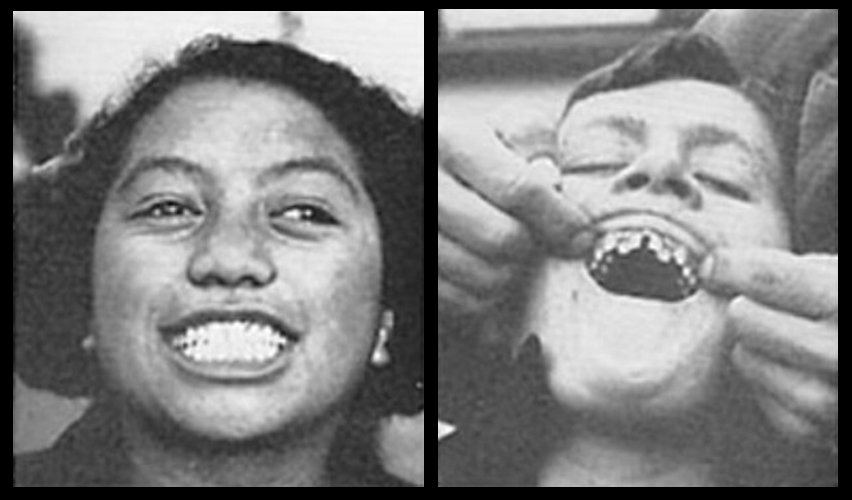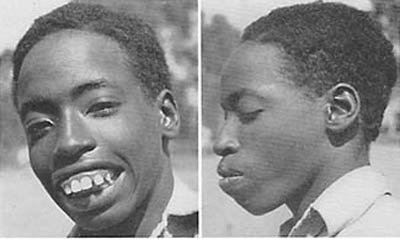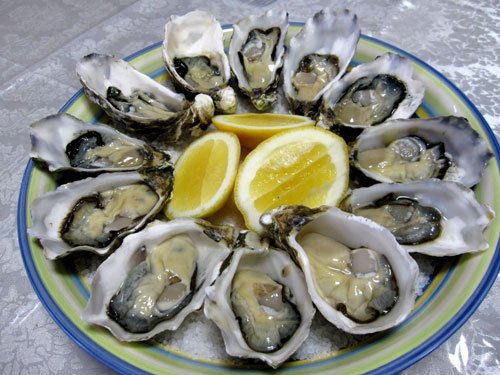More journeys through the chaos of conflicting theories about what constitutes a healthy diet.
OK, I confess the travels weren’t mine. They were those of a dentist called Weston Andrew Price and his wife Florence, back in the 1930s. Price went in search of the ideal diet, after he noticed that his younger patients’ teeth were not as good as their parents.
Everywhere they went, they found that populations eating their traditional diets had excellent dental, physical and mental health. But their relatives who had moved to the cities and started eating processed foods quickly developed dental and health problems.

Image source: Nutrition and Physical Degeneration, by Weston A Price
And in the second generation, dental deformities arose. This was because the traditional, real food diets were much higher in minerals and fat soluble vitamins (A, D and K), and much lower in sugar, than the diet of processed foods. Now we think it’s normal to have orthodontic work done, or need to have teeth extracted. But he told it how it is – a deformity.

Image source: Nutrition and Physical Degeneration, by Weston A Price
The ideal diet wasn’t that simple to identify as it varied by what was available. For example:
• Cod and oats were the main foods in the Islands of the Outer Hebrides
• Unpasteurised cheese and sour dough rye bread were eaten in the Loetschenthal Valley in Switzerland
• African diets ranged from the milk and blood of the Masai to agricultural diets based largely on beans and rice.
But there were certain commonalities.
The first was the one that I touched on in my last nutrition article – they were only eating real, natural foods. As chemical pesticides and herbicides hadn’t been invented, the diets are also organic, and of course there were no GMOs.
He was surprised to discover no vegetarian societies. Sometimes they weren’t able to eat a lot of animal foods due to lack of availability, but they utilised whatever they could. Certain animal foods were revered as the sacred foods, especially important for young parents-to-be, nursing mothers and the sick or fragile. These were organ meats, seafood and raw cream: foods we now know to be high in vitamins A, D and K.
There were also no low fat diets, not even low saturated fat diets. The calories from fat ranged from 30-80% of the diet and were mostly saturated. The small amounts of mono and polyunsaturated fats were roughly 50:50 omega 3 and 6, and came from whole foods, rather than isolated oils as we have today.
All of the diets included salt, and it was considered essential. They all included bones, usually in the form of bone broths. Both of these would have contributed to the higher level of minerals.
Animal foods were often eaten raw, but plant foods were usually cooked, for better digestion. Quite the opposite of a raw food diet today.
The seed foods (grains, legumes, nuts and seeds) were soaked, sprouted or fermented. This broke down anti-nutrients such as phytic acid and made them more digestible.
There were a variety of fermented foods consumed, which contained enzymes and beneficial bacteria.
The last commonality was that provision was made for the next generation. As well as the young people ready for marriage being fed the sacred foods, children were spaced 3 or 4 years apart. This allowed the mother to rebuild nutrient stores, so the new baby was fully nourished.
In my previous article about the wide range of so-called healthy diets out there, I suggested we all go back to home cooked meals, made from a wide variety of real foods, to start any healing journey. (I recommend reading my last article, for some more context.)
We can kick it up a notch by incorporating some of these principles. Practical tips on how to do that will be covered in my next article. Watch this space…

PS. If you can’t wait for my next post, my Recipe website http://www.frot.co.nz/design/recipes/ includes my real food cooking course – a 15 lesson, step by step guide to changing over to real food.


